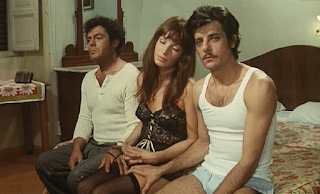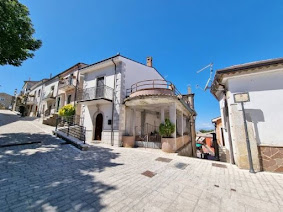Singer was called the most outstanding interpreter of Bellini of his day
Opera singer Salvatore Fisichella, who won international acclaim for his interpretations of the leading roles in Bellini’s operas, was born on this day in 1943 in Catania in Sicily..jpg)
Salvatore Fisichella began
singing as a small child
Recognised for the ease and vocal brilliance of his singing, Fisichella has specialised in performing in bel canto operas, especially those of Gioachino Rossini, Gaetano Donizetti and Vincenzo Bellini.
He began singing when he was a small child at family parties. He was taught music at the local seminary and from the age of ten sang solos during church services.
After leaving the seminary, Fisichella attended a secondary school that had a science-based curriculum and then studied to become a surveyor.
Once he had qualified as a surveyor, he had little time for singing, but one day he was invited to the wedding of one of his clients. Fisichella had drawn up the plans for the couple’s new home, but on the day of the wedding he found himself filling in for the tenor, who had been scheduled to perform but whose arrival was delayed.
.jpg) |
| Fisichella's operatic debut came in 1971 |
His interest reawakened, Fisichella began working under Maria Gentile, a soprano from Catania who had become a singing teacher. He listened to the singing of Mario del Monaco, Giuseppe Di Stefano, Franco Corelli, Carlo Bergonzi and Gianni Raimondi and occasionally took part in small concerts. His breakthrough came when he won a prestigious singing competition in Spoleto.
In 1971, he was engaged by the Teatro dell’Opera di Roma for two performances of Rigoletto and seven performances of I puritani with Mirella Freni . A year later he was back at the theatre again to appear with Mirella Freni in Gounoud’s Faust. In 1973 he made his debut at the Teatro Bellini in his home town of Catania in La bohème.
Fisichella subsequently performed all over the world in the top theatres and concert halls and enjoyed enthusiastic receptions and glowing reviews.
.jpg) |
| Fisichella once received a 22-minute standing ovation |
In 1992 in Paris, he received a 22-minute standing ovation following his performance at the Concerto Belliniano at the Champs Élysées opera house. The French press declared him the most outstanding interpreter of Bellini of his day. In 1994 he was awarded the Bellini D’Oro prize by the Sicilian Tourist Authority. Fisichella continued to perform on the international stage well into this millennium and now passes on his technique and experience by giving masterclasses to up and coming young tenors.
Fisichella lives in Sant’ Agata li Battiati near Catania with his wife, Fiorella, He has a son, Filippo and daughter Lucia Martina (Lulu), who also enjoys singing.
Salvatore Fisichella celebrates his 79th birthday today.
Travel tip:
Catania sits in the shadow of Mount Etna,
the still-active volcano
Salvatore Fisichella’s home city of Catania is one of the ten biggest cities in Italy, and the seventh largest metropolitan area in the country, with a population including the environs of 1.12 million. Located on the east coast of Sicily facing the Ionian Sea, it has twice been destroyed by earthquakes, in 1169 and 1693. With Mount Etna looming in the background, it can be compared in some respects with Naples, which sits in the shadow of Vesuvius, in that it lives with the constant threat of a natural catastrophe and as such it has always been a city for living life to the full. In the Renaissance, it was one of Italy's most important cultural, artistic and political centres and enjoys a rich cultural legacy today, with numerous museums and churches, theatres and parks and many restaurants.
Travel tip:
The beautiful Basilica
della Collegiata
Catania is notable for its Baroque city centre, which is a UNESCO heritage site, but also has some outstanding classical buildings, ancient remains buried over the centuries. Greek and Roman cities built on the site of the present city disappeared under layers of lava from Etna's eruptions but parts of them have been unearthed, including an impressive Greek-Roman theatre. Among the many fine examples of the Sicilian Baroque style, which is typical of the island, including the beautiful Basilica della Collegiata, with its six stone columns and the concave curve of its façade. A prominent architect was Vincenzo Sinatra, a pupil of Rosario Gagliardi, who had been influenced by Gian Lorenzo Bernini’s work in Rome.
Also on this day:
1567: The baptism of composer Claudio Monteverdi
1902: The birth of band leader Pippo Barzizza
1936: The birth of actress Anna Maria Alberghetti

.jpg)


.jpg)
.jpg)





%20(2).jpg)

.jpg)


.jpg)

.jpg)
.jpg)

.jpg)
.jpg)

.jpg)

.jpg)